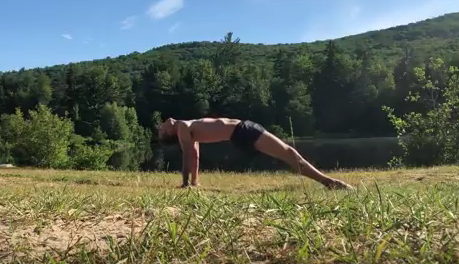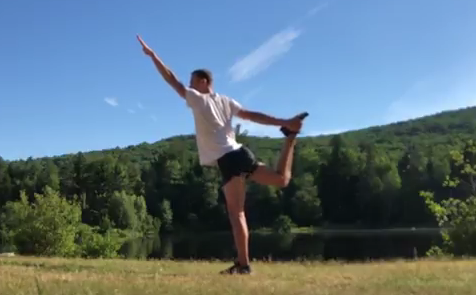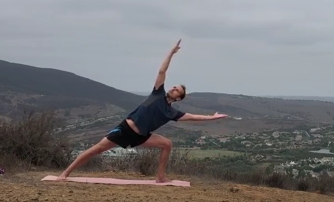What Should My Morning Yoga Practice Be?

July 2019
Many people have
asked me this question over the years. If you are a yoga teacher, you have
probably been asked this question by your students as well.
In the past, before I learned about common injury-patterns, my standard answer has been “Oh, just do some yoga each morning.” I would say, “Don’t task yourself with too much for too long in the beginning – just do 20 minutes of whatever feels good. The next morning, you can change it up, and vary your routine.”
There is nothing wrong with that advice. However, lately my yoga recommendations have gained a more specific edge:
“Reverse your habitual patterns.”
I say this to my massage clients, when they ask what else they can do (in addition to bodywork) to fix their back pain, chronic shoulder tension, neck stiffness, or achy hips.

What does it mean to reverse your patterns? How would it be helpful for someone who has chronic tension and pain? And finally, how can we reverse our patterns with yoga?
I am talking about our movement patterns, which are governed by gravity and our habits of convenience (sitting, driving, being lazy). In other words, our body habituates into a very narrow pattern of movement. We mostly sit, stand, walk, and lie down.

If you watch children play, their patterns are a lot more diverse: climbing, crawling, hanging, twirling, rolling, squatting, and so on.
When was the last time you hung from a high bar? Or held your butt above your head? Or moved laterally, sideways? Or balanced on one leg?
These are all natural movement patterns that our bodies are capable of, but after a certain age we stop using them. As the saying goes, “if we don’t use it, we lose it.” We fall into a narrow pattern of movement, which causes a long list of problems. Here are some examples:
- Shortened hip flexors from sitting, driving, air travel – lead to back pain;
- Flattened and weak butt muscles from sitting, etc. – lead to postural instability and therefore back overuse from compensation for butt weakness;
- Overstretched sacrum (base of the spine) from sitting, etc. – leads to general lack of stability;
- Overstretched (stretched taut for too long) mid-back muscles from sitting, etc. – lead to lack of blood flow, chronic pain and tension in the mid-back and shoulder blade area;
- Overstretched upper trapezius and levator scapula muscles (top of shoulders) as arms hang down on these muscles all day when sitting, driving, etc. – lead to chronic pain and tension.
These are some of the most common ones. There are many other issues in almost all of our tissues.
Fortunately, yoga offers solutions for reversing our habitual patterns so we do not lose mobility, or stability, or develop the above-mentioned injuries.
So, what should one do in their morning yoga practice?
My answer: Any practice that aims to reverse your habitual patterns:
- Move laterally with Warrior 2s, Side-angle poses, Triangles, and side planks, as in the videos below;
- Invert – i.e. Down dog, Shoulderstand, Headstand, etc.
- Stretch the shortened hip flexors;
- Strengthen the back and the butt muscles;
- Do Not stretch the back or the butt muscles (they are already overstretched for most of us).